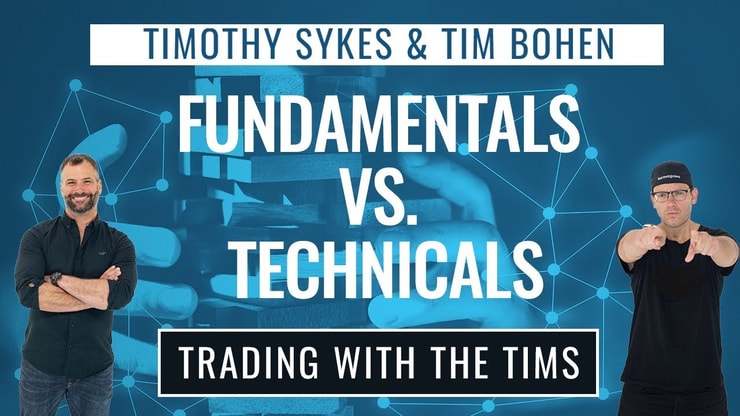In the realm of stock market investing, “outperform” refers to a performance benchmark wherein a stock, asset, or fund achieves higher returns than a particular standard, usually a market average or index. To outperform means not just to do well, but to exceed the performance of other comparable investments or benchmarks, indicating that the asset is achieving gains beyond the norm for its category. For investors, this term signifies superior financial health and market positioning, potentially heralding increased profit margins and investment growth.
Examples of signals suggesting a stock might outperform include a series of earnings reports that surpass analysts’ expectations, or a company securing a substantial new contract that promises to boost future revenues significantly. Market trends that favor a particular sector over others can also point towards potential outperformance.
You should read the article because it provides actionable insights into the specific conditions and strategies that contribute to a stock outperforming the market.
I’ll answer the following questions:
- What does it mean for a stock to outperform?
- What factors indicate that a stock might outperform?
- How can strong financial health impact a company’s stock performance?
- What are the advantages of a competitive edge in the market?
- Why is a high-quality business model important for a stock?
- How do earnings growth and revenue diversification affect stock performance?
- What role does adaptability play in outperforming the market?
- Why is risk management crucial in stock trading?
Let’s get to the content!
Table of Contents
- 1 What Causes a Stock to Outperform?
- 2 Common Traits of Stocks That Outperform the Market
- 3 Why Outperform Is Important in Stocks Trading
- 4 What Are the Risks of Chasing High Returns to Outperform the Market?
- 5 Mistakes That Prevent Investors From Outperforming the Market
- 6 Key Takeaways
- 7 Frequently Asked Questions
- 7.1 Is Outperforming the Market Sustainable Over the Long Term?
- 7.2 How Often Do Active Traders Outperform the Market?
- 7.3 Are There Any Proven Shortcuts to Outperforming the Market?
- 7.4 What Is the Role of Experience in Offering Sound Investment Advice?
- 7.5 How Can Information and Experience Influence My Trading Strategy?
- 7.6 What Factors Should Influence My Decision on Choosing Financial Securities?
- 7.7 How Does an Accurate Approach Form the Basis for Making Money in Trading?
What Causes a Stock to Outperform?

2025 Millionaire Media, LLCVarious factors can influence a stock’s ability to outperform the market. These range from internal elements like strong financial performance and innovative business strategies to external influences such as favorable industry trends or regulatory changes. A pivotal component is often the company’s ability to capitalize on these elements faster or more effectively than its competitors.
Key indicators that investors might look for include: earnings growth, revenue increases, market share expansion, cost management, and strategic corporate developments.
These are all fundamental indicators — check out the video for a review!
Common Traits of Stocks That Outperform the Market
Stocks that consistently outperform the market share several defining traits that set them apart from average performers. These characteristics not only highlight the intrinsic strengths of a company but also underscore the strategic advantages they hold within their sectors. Understanding these traits helps investors and traders—whether seasoned or novices—identify potential winners before they make significant market moves.
One primary trait is the company’s robust financial foundation. Firms with solid finances typically manage their resources efficiently, maintain healthy cash flows, and have debt levels that are manageable within the context of their industry norms. Such financial health allows these companies not only to survive challenging economic times but also to seize growth opportunities more readily than their financially weaker counterparts. This is a crucial measure I often emphasize in my teachings, where leveraging such insights can lead to more informed and potentially lucrative investment decisions.
Another significant characteristic is the presence of a sustainable competitive edge. Companies that outdo, outpace, and outshine their competitors often have one or more competitive advantages. These can range from innovative technologies and proprietary products to strong brand loyalty and strategic market positioning.
The ability to adapt to changing market conditions reflects a company’s resilience and flexibility—traits that are increasingly important in today’s fast-paced market environments. Businesses that quickly adjust their strategies in response to market news or changes in consumer interest often manage to maintain their lead in the industry. Adaptability can also be seen in how companies manage their investment portfolios, aligning them with long-term financial goals and the shifting landscapes of the markets in which they operate.
Strong Financial Health
Strong financial health is crucial for a company’s capacity to outperform the market. Financial robustness allows a company to invest in growth opportunities, weather economic downturns, and meet or exceed investor and analyst expectations consistently.
Financial metrics signaling strong health include:
- Debt-to-equity ratio
- Free cash flow
- Return on equity
- Profit margins
- Competitive Advantages
Competitive Advantages
A company’s competitive advantages are critical in securing its market position and ability to outperform. These advantages can be tangible, such as advanced technology or proprietary processes, or intangible, like brand strength or unique partnerships.
Examples of competitive advantages include:
- Proprietary technology
- Brand recognition
- Exclusive licenses
- Cost leadership
- High-Quality Business Models
A high-quality business model is inherently designed to outperform the market. Such models are characterized by efficiency, scalability, and the ability to generate sustained earnings.
More Breaking News
- BBAI Faces Legal Storm: Stock Fluctuation Insights
- Moderna Stock Surges: Breakthrough Influenza Vaccine Results?
- Rhythm Pharmaceuticals Faces Rising Prospects Amidst Clinical Trials
High-Quality Business Models

2025 Millionaire Media, LLCCharacteristics of high-quality business models include:
- Scalability
- High customer lifetime value
- Strong network effects
- Efficient use of capital
- Earnings Growth and Revenue Diversification
Earnings Growth and Revenue Diversification
Earnings growth and revenue diversification are often indicative of a company’s potential to outperform. A diversified revenue stream reduces reliance on a single market or demographic, spreading risk and increasing the potential for profit across different sectors.
Ways companies achieve revenue diversification include:
- Expanding into new markets
- Developing new products
- Cross-selling services
- Strategic acquisitions
- Adaptability to Market Changes
Adaptability to Market Changes
The ability to adapt to market changes is crucial for sustained outperformance. Companies that anticipate or quickly respond to market shifts can protect their competitive edge and capitalize on new opportunities.
Examples of successful adaptations include:
- Pivoting product lines in response to consumer trends
- Adopting new technologies ahead of competitors
- Strategic shifts in response to regulatory changes
Market adaptability is not only about adjusting to economic shifts but also capitalizing on financial discrepancies. Arbitrage trading, for instance, is a sophisticated strategy that leverages price differentials across different markets or forms. It requires nimble responses to market changes and a good grasp of multiple market conditions. Traders looking to enhance their adaptability might benefit significantly from mastering arbitrage methods, which could lead to a better chance of profits. For a practical application, check out our comprehensive guide on Arbitrage Trading Strategy.
Valuation and Market Sentiment
Valuation and market sentiment significantly affect a stock’s ability to outperform. An undervalued stock with positive market sentiment may have a higher potential to rise as perceptions align with reality.
Methods to gauge market sentiment include:
- Analyst ratings
- Investor surveys
- Media sentiment analysis
- Market volatility indices
Risk Management
Risk management is integral to outperforming the market. By shrinking potential losses and optimizing the risk-return ratio, investors can enhance their chances of superior performance.
Effective risk management techniques include:
- Diversification across assets and geographies
- Regular portfolio rebalancing
- Use of stop-loss orders
- Hedging strategies
Effective risk management is critical in safeguarding investments and capitalizing on opportunities in volatile markets. Understanding the ‘fair value gap’—the difference between the market price of a stock and its calculated fair value—can be a crucial risk management tool. This knowledge allows investors to identify potentially undervalued or overvalued stocks before making trading decisions, providing a buffer against market volatility and irrational market behaviors. For insights into how to identify and exploit fair value gaps, delve into our detailed breakdown on Fair Value Gap.
Why Outperform Is Important in Stocks Trading

2025 Millionaire Media, LLCInvesting in stocks that outperform is critical for maximizing returns and growing personal wealth. Outperformance indicates that an investment is not only safe but also capable of yielding above-average results, making it a sought-after goal for individual and institutional investors alike.
Reasons why outperformance is a key investment goal:
- Higher returns on investment
- Increased portfolio growth potential
- Enhanced market reputation
- Greater financial security
What Are the Risks of Chasing High Returns to Outperform the Market?
Focusing solely on high returns can lead to significant risks, such as overexposure to volatile assets or sectors. The pursuit of high returns without a balanced risk assessment can lead to losses, particularly in unstable market conditions.
Strategies to mitigate these risks while aiming for high returns include:
- Comprehensive market research
- Investment diversification
- Realistic goal-setting
- Continuous performance monitoring
Mistakes That Prevent Investors From Outperforming the Market
Common errors that hinder market outperformance include misreading market signals, overreacting to short-term events, and neglecting thorough research. These mistakes can derail even the most promising investment strategies.
Tips for avoiding these mistakes:
- Stay informed through continuous education
- Maintain a long-term perspective
- Use data and analysis over gut feelings
- Regularly review and adjust strategies
Key Takeaways

2025 Millionaire Media, LLC- Understanding and applying the concept of “outperform” is vital for investment success.
- Strong financial health, competitive advantages, and high-quality business models are critical traits of outperforming stocks.
- Adapting investment strategies based on comprehensive market analysis enhances the probability of outperforming.
Trading isn’t rocket science. It’s a skill you build and work on like any other. Trading has changed my life, and I think this way of life should be open to more people…
I’ve built my Trading Challenge to pass on the things I had to learn for myself. It’s the kind of community that I wish I had when I was starting out.
We don’t accept everyone. If you’re up for the challenge — I want to hear from you.
Apply to the Trading Challenge here.
Trading is a battlefield. The more knowledge you have, the better prepared you’ll be.
What stocks do you think will outperform? Write “I’ll keep it simple Tim!” in the comments if you picked up on my trading philosophy!
Frequently Asked Questions
Is Outperforming the Market Sustainable Over the Long Term?
Sustaining outperformance over the long term is challenging due to market volatility and competitive pressures, requiring continuous innovation and strategic adjustments.
How Often Do Active Traders Outperform the Market?
Active traders can occasionally outperform passive benchmarks, but consistent long-term outperformance is rare and dependent on market conditions and trading skill.
Are There Any Proven Shortcuts to Outperforming the Market?
While there are no guaranteed shortcuts to outperforming the market, informed decision-making based on solid research and adaptive strategies can improve the chances of above-average returns.
What Is the Role of Experience in Offering Sound Investment Advice?
Experience plays a critical role in providing reliable investment advice as it combines practical insights gained from past trades with knowledge of market dynamics. Experienced advisors are better equipped to guide on when to enter or exit trades, manage accounts efficiently, and adapt strategies to evolving market conditions.
How Can Information and Experience Influence My Trading Strategy?
Leveraging quality information and personal trading experience can significantly influence your trading strategy. These elements help in making informed decisions, refining tactics based on past outcomes, and applying lessons learned to future securities investments to outperform the market.
What Factors Should Influence My Decision on Choosing Financial Securities?
Choosing financial securities should be influenced by factors such as the current market price, the stability of funds, and the historical performance of the account. Incorporating advice from seasoned traders and using comprehensive articles as learning tools can also guide your investment decisions to potentially beat the market.
How Does an Accurate Approach Form the Basis for Making Money in Trading?
Accuracy ibn trading, grounded in a solid basis of market analysis and strategy formulation, is essential for making money consistently. This involves using some form of quantitative and qualitative data to refine investment decisions and optimize returns. Over time, this method ensures that traders minimize losses and capitalize on market opportunities effectively.











Leave a reply